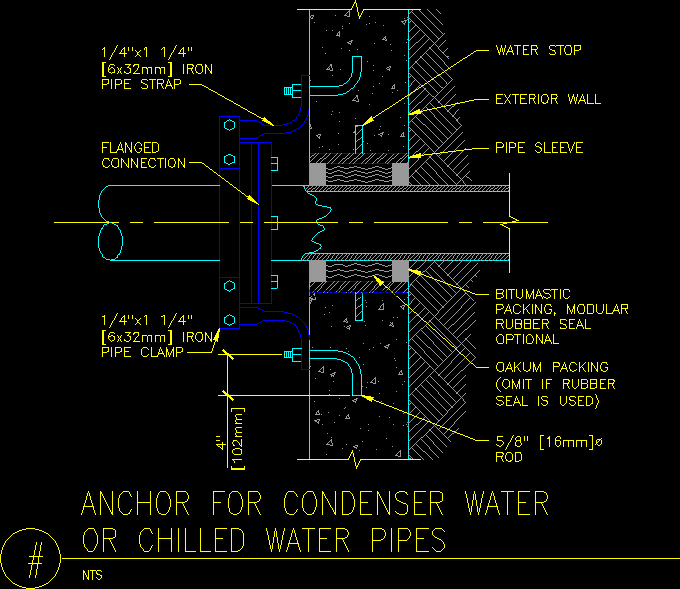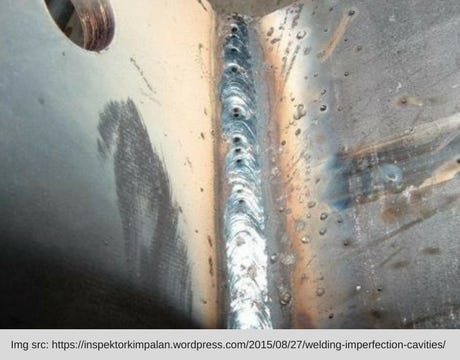Improper welding technique. Remedies for crater: 1. Using a proper torch angle may reduce the stress on the metal 2. Using a small electrode may also decrease the crater. Use a proper technique. Internal Welding Defects. The various types of internal welding. We are experience start/stop cracking (Crater, Fish Eye) when welder pulls out of the welding puddle. Here are some specifics about the welding procedure: Pipe: 3” High Nickel - Sch 5- Stainless Steel Pipe used in Slurry piping at beer brewery facility. Fit up: Square Cut Pipe and jammed up. (no welding gap) One pass. A crater pipe forms during the final solidified weld pool and is often associated with some gas porosity. This imperfection results from shrinkage on weld pool solidification. Consequently, conditions which.
- Weld Crater Definition
- Crater Pipe In Welding Fittings
- Crater Pipe Defect In Welding
- Crater Cracks In Welds
- Crater Pipe In Welding Supply
If you are a welder or are learning about welding, you may have heard of the term ‘porosity’ being used by many people around you. Porosity is considered an imperfection or defect in the welding process, and welders are constantly looking for ways to be able to reduce it easily.
But what is porosity in welding?

Porosity is the term used for gas pores that can be found in the weld bead after it has solidified. The pores can be of various sizes and are generally randomly placed.
However, sometimes the porosity is found only in the weld center. Pores can occur on the weld surface or under it.
Types of porosity
Distributed porosity & surface-breaking pores
This can be found as pores that are evenly distributed throughout the weld bead, though placed randomly. Surface breaking pores is the term to describe high levels of distributed porosity to the extent that they reach the surface.
Porosity is caused by gas particles getting absorbed into the weld pool while it is molten, and then being released when the pool solidifies. This can be because of poor gas-shielding.
Air gets trapped in the shielding gas and can cause porosity, even if it is just the smallest amount. Even 1.5% of air composition mixing with the shielding gas can cause surface-breaking pores.
Other frequent causes of these kinds of pores are leaks in the gas line, gas flowing a very high rate, and draughts. Sometimes, if there is turbulence in the weld pool, it may cause pores.
Wormholes
Wormholes are a fancy word for elongated pores that show up on the radiograph with a herringbone appearance.
Because wormholes are elongated pores, they indicate that there is a large amount of gas that was trapped in the weld metal during the solidification process. Surface contamination or thick paint and primer coats can cause excessive gas formation, and if the weld has any crevices such as in a T joint, it is likely to be trapped.
While welding T joints, the coating thickness should also meet the required standard, and not be too high, because this can also cause porosity.
Crater pipes
Crater pipes are often associated with the porosity and usually form when the weld pool is solidifying because of the gas getting trapped.
Crater pipes are a result of the weld pool shrinking as it solidifies. This makes the liquid to solid volume change dramatically, which causes crater pipes.
Extinguishing the welding arc causes the weld pool to solidify rapidly, and in some cases, like with TIG welding, stopping the welding wire from entering the weld pool before extinguishing the arc can promote the formation of crater pipes.

Causes of porosity
Porosity is a welding defect and is an undesirable outcome for any welding task. To be able to understand how to avoid porosity, you’d first have to understand why it happens.
Moist electrodes
Moist electrodes can cause porosity since the moisture content of the weld metal would rise, and if steam gets driven out because of the heat from the welding process, it could cause small cavities in the weld metal. Porosity can occur when stainless steel electrodes and low-hydrogen electrodes aren’t kept in the correct dry conditions.
In low-hydrogen electrodes, some moisture is needed for better performance, but if the moisture levels get too high, the weld metal will be susceptible to porosity.
Weld Crater Definition
Contaminated surfaces
If the parent metal or the electrodes are contaminated, the oil, grease, or even moisture that was present on the metal surface can contribute to the formation of gas because of the high welding temperatures, and this can cause problems of porosity once the weld pool begins to solidify.
Improper gas shield
Air entrapment, such as in an inconsistent gas shield, as mentioned earlier, can also cause porosity problems. A correct connection between the gas hose and the equipment makes sure that air is not allowed to mix with the shielding gas and hence prevent any problems that could arise from it.
Airflow and draughts around in the environment can also cause the gas flow to be restricted.
Gas flow rate
If the gas flow rate is too high, there can be turbulence in the weld pool, which can cause air to get trapped in the weld metal and result in pores.
Inadequate electrode deoxidant
Sometimes, during the solidification process, excess oxygen that comes out of the weld metal because of the reduced solubility can react with other gases in the air and form carbon monoxide, which can also cause porosity.
Because of this, deoxidants are usually added to the electrodes and filler metals, and sometimes even the parent metals to remove excess oxygen content (called deoxidation). If these deoxidants are not enough, or inadequate, the excess oxygen will form carbon monoxide and can result in porosity.

Arc length
If the arc length is too high, such as due to high voltage, the magnitude of the shielding is reduced and can cause the air in the atmosphere to be trapped in the weld pool, which can then cause porosity when it solidifies.
Surface treatments
Sometimes, surface treatments such as painting can cause the release of certain gases, which can cause porosity as well. Zinc coating and galvanizing produce gases and unwanted particles that can cause defects in the weld.
For this, you’d have to predict the chemical reactions that could take place before you proceed with surface treatments.

Openwork surface
Surfaces that are exposed to the open air and can be affected by the atmospheric conditions are more prone to porosity because of the likelihood of contamination. Any air that enters the weld puddle can cause porosity when it begins to solidify.
Crater Pipe In Welding Fittings
Inappropriate flux
Flux has to be treated carefully since it is capable of absorbing moisture and must be supplied dry. However, low activity flux can produce surface porosity, which is why high activity flux is recommended.

Preventing porosity
Clean surfaces
Keeping the welding material – the surface, the metals, and the equipment – clean can help reduce porosity. By making sure you aren’t carrying out the welding process on a surface that has grease and moisture, you can prevent porosity and even unsound welds that may end up need reworking.
Crater Pipe Defect In Welding
Check your gas flow
Powerful gas flow can cause the air around it to get disturbed and result in mixing. By keeping the gas flow at the recommended level depending on the application, you can get a great weld with minimal porosity, and even improve your welding efficiency.
Check your equipment
Over time, the equipment you use can start to wear down. Hoses can start leaking, and pipes can be exposed or frayed, so if you check all your equipment and connections before you start welding, you can make sure your weld is not susceptible to porosity because of your equipment.
Workspace conditions
The workplace environment can also determine porosity levels. If the environment is too moist, or if there is a breeze, your weld would be much more susceptible to porosity.
Related questions
Why is porosity bad?
Porosity can make a weld unstable due to the presence of gas within the weld and might need reworking, which can take up a lot of time and money.
How much porosity is acceptable?
Crater Cracks In Welds
While eliminating porosity is impossible, you can take steps to reduce it to an acceptable amount. The sum of diameters of visible pores should not exceed more than 9.5mm in any linear inch of a weld for the porosity to be an acceptable amount.
Crater Pipe In Welding Supply
How can you remove porosity from a solidified weld?
Porosity is not capable of being burned out. It moves from weld pass to weld pass, and to remove it, you would need carbon arc gouging or use grinding to fix the weld.
